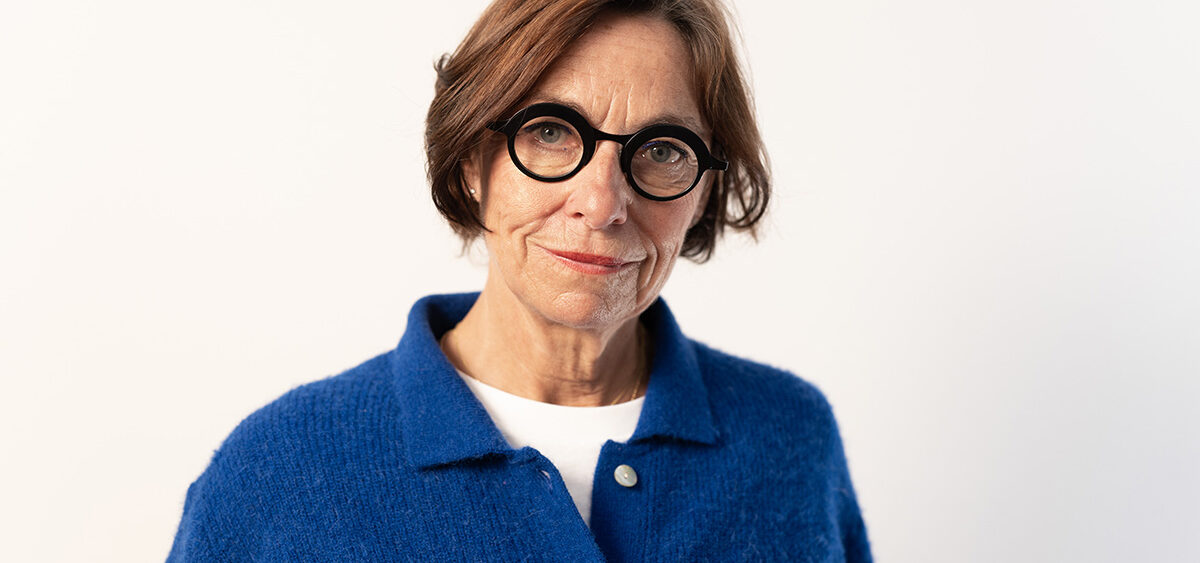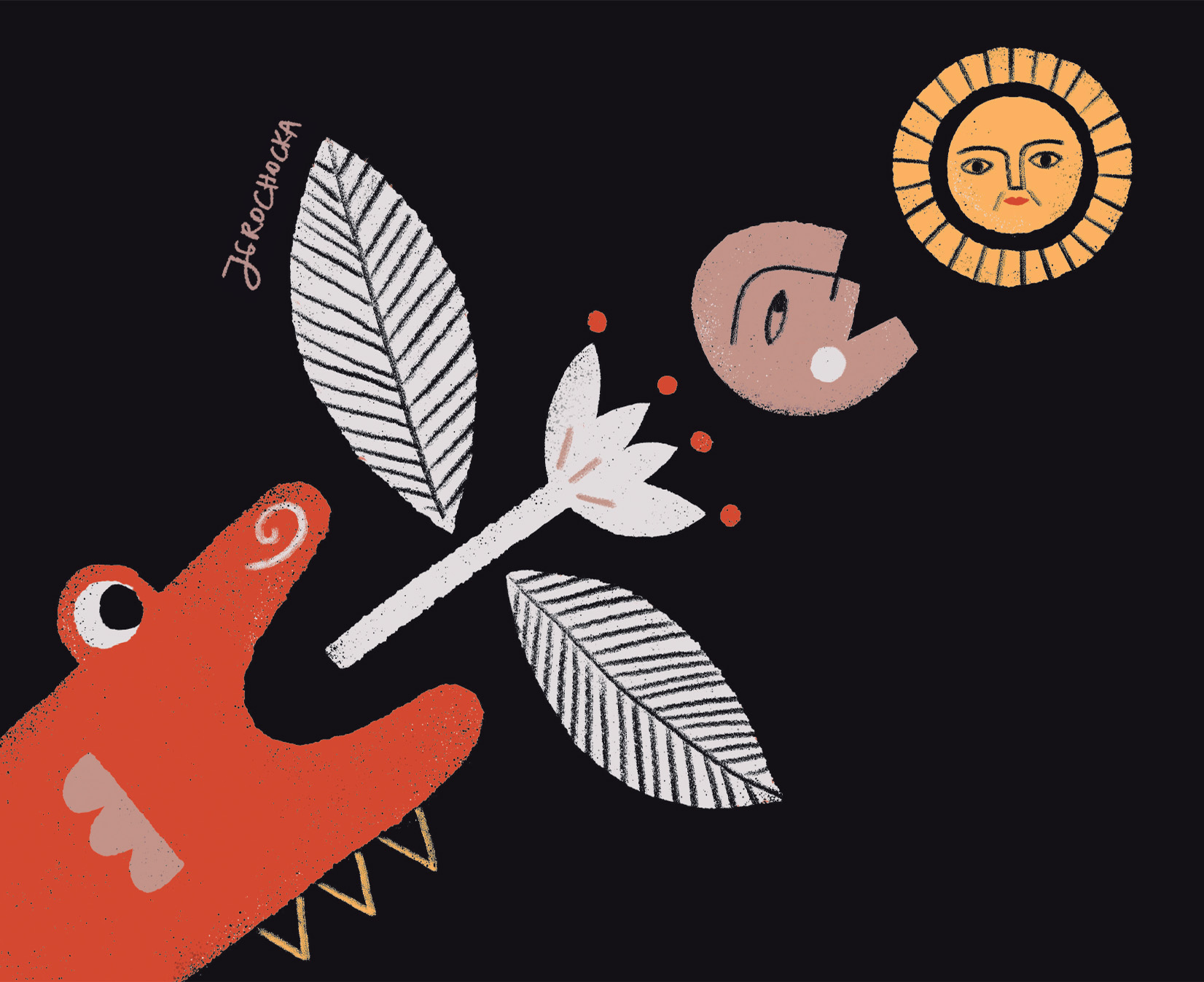
Cultivating relationships with the dead not only brings people comfort in the midst of grief, but also restores meaning to life. Vinciane Despret, a Belgian researcher and the author of Our Grateful Dead: Stories of Those Left Behind, talks about the profession of midwifery for the dead and the benefits of returning to home funerals.
Paulina Małochleb: Who is a death midwife?
Vinciane Despret: It’s usually a woman – although not only women belong to this group – who has had to face the death of a loved one, herself, and has discovered that burial rituals are highly commercialized and extremely violent. It’s her task to reintroduce home rituals, prepare the burial and farewell for the deceased, and support the surviving loved ones – in other words, to give meaning to the funerary rites. Because the ones conducted by present-day funeral homes have been stripped of it.
This profession isn’t new. Death midwives are trying to rekindle the funerary customs that existed in our homes before we experienced the phenomenon of the hospitalization of death. They organize the washing of the body, invite mourners to the home, and deal with legal and logistical issues. And they also undertake certain tasks of a spiritual nature – for example, they arrange prayers if someone needs them. We don’t need to understand prayer in a religious sense here, it’s just a continuation of a conversation, except that the deceased will no longer answer us. During the washing of the body, a blessing takes place in which the mourners can participate. It consists of reciting a kind of litany over various parts of the body: ‘bless her eyes that have looked at the world for so long,’ ‘bless his arms that have borne cares for so long,’ and so forth. Every gesture is ritualized, but it also acquires a relational dimension – it sustains the bond between the deceased and their loved ones.
What is the home funeral movement all about?
It’s a movement that arose in the United States and is becoming increasingly popular in Europe. Death midwives are an integral part of this movement. It opposes commercial burial procedures that are harmful to the family, environmentally unfriendly and expensive, and which involve a wide range of violence.
The body of the deceased is subjected to this violence immediately after death – it’s taken from the place of death, frozen, washed and pumped with chemicals that are supposed to slow down decomposition. Embalmed, over-dressed, painted and beautified, the body’s removed from the family, who have no further contact with it. It’s placed in a coffin, away from the mourners. And so, there’s a ‘confiscation of the deceased’ who becomes, as it were, property of the funeral home. Family members shift to a position of unobtrusive supplicants and customers. They have no right to care for the deceased or organize his or her departure from the home; they only provide clothing.
This ritual takes on administrative characteristics. The funeral home is a kind of corpse factory; it turns the bodies of our loved ones into anonymous corpses and deprives the ritual of any sacredness. A home funeral is less formal, more flexible, unconstrained – everyone can add content to it, and there’s no need to submit to any particular ritual.
There’s paradoxical symmetry: parallel to the development of the home funeral movement, we can observe the growing popularity of home births, without a doctor and assisted by midwives. Is there a return to tradition here as well?
Until recently, childbirth was viewed solely as a medical procedure. The woman giving birth was the subject of medical interventions, with a doctor in charge. However, in a midwife-assisted birth, it’s the mother who’s in the foreground. The midwife is more open and cooperative; she supports the woman and guides her through the birth, while at the same time remaining in the background. In the end, three new beings are born. In addition to the baby, the mother and father also come into the world – as adults who have taken on new roles.
Medicine was born as a science because it was necessary to learn how to determine the moment of death. The encephalogram started to be used for this. It’s the same with childbirth – the natural process has become fully medicalized over the last 50 years, and the woman giving birth must report to a hospital and submit to a doctor’s authority.
The medicalization and professionalization of both processes have changed them from being a private experience to one in which the individual is merely a cog in a machine: pregnancy is less important than childbirth, and death is less important than a funeral. The presence of a midwife thus restores order and changes the hierarchy – it restores the old, traditional hierarchical system from before modernity.
Are the dead present in the life of modern society?
They’ve never stopped being present, but people have stopped mentioning them in the public sphere. We removed the dead from public space because talking about them and our relationships with them was considered absurd, and whoever talked about them was treated as backwards or just plain crazy. In private spaces, however, people have never stopped talking about the dead.
There are countries where this topic isn’t treated with hostility, such as Mexico and Iceland. In France, however, the opposite is true: secularism has completely eliminated the dead.
Does this mean that the relationship between the living and the dead is closer in religious societies?
No. Although most religions recognize the existence of life after death as dogma, they don’t approve of the belief in ghosts. Seeking contact with them and traces of their presence is surrounded by taboos and often considered a sin. It was criminalized for centuries.
This bond is strong only in societies where religion is practiced in a folkloric way. It’s often accompanied not only by reverence for the dead, but also by veneration of the Virgin Mary.
What has led us to banish the dead from our lives?
The blame for this lies with the republican mentality and the radically construed Enlightenment paradigm, as well as with the rationalism of the second half of the 19th century. August Comte redirected our thinking along strictly materialistic lines. His positivist mindset was based on the rejection of everything religious, turning the cult of the dead into a purely symbolic ritual based on the belief that the dead are no longer present in any form and cannot be made present because they’re truly, ultimately dead.
This process was brilliantly described by the psychoanalyst Jean Allouche, who predicted that religion would increasingly be eliminated from the public sphere. Psychology and psychoanalysis relegated religious phenomena to the intimate sphere of individuals. Psychoanalysis took the place of spiritual healing, and replaced religious life with psychological life.
All of these processes accelerated the eradication from public space of what is contemptuously called superstition. In the midst of progress, religion – also in the folk version – became unnecessary ballast and a manifestation of mental backwardness. Freud, therefore, encountered very fertile ground with his theories about mourning. These studies completely eliminated ontology from our lives – we stopped asking about the existence of people, animals, spirits, and the world around us. We stopped wondering if we have souls, if animals have souls, or about the existence of the dead. Viewed from the point of view of European science, the world ceased to be polyphonic and multicoloured. However, for other, non-European cultures it remained so. The theory of mourning fits into this ontological impoverishment.
Psychological and psychoanalytic theories lay emphasis on doing the ‘work of mourning’ after the death of a loved one. Does this idea of mourning as work help us?
No, it doesn’t. Moreover, it’s counterproductive. Those who go to therapy to cope with grief are taught that they must go through a certain process, the successive stages of which will distance them from the deceased, so that they eventually accept the fact that the deceased no longer has any form of presence. Meanwhile, in the private sphere, while experiencing mourning, they try to draw closer to the dead: they look for traces, signs, memories. In theory, we accept death, while in practice we try to make our dead loved ones more present to us in every way possible.
According to this new understanding of death, does it cease to be a sudden, momentary event?
Yes, it’s a process. Initially, death was thought to be determined by the cessation of the heart’s beating. Then there were studies of the disappearance of brain waves, which can be confirmed only by a doctor and with the use of a special device. Meanwhile, death is by no means a sudden, brutal event. It’s not that we’re alive one minute and dead the next. Our body dies slowly – organs die at different rates, hair and nails continue to grow, and the process continues, just in a different way. There’s quite a bit of life in the dying of our body.
Your book suggests that the dead deserve tenderness. But are the living perhaps more in need of this tenderness?
We don’t know for sure; we don’t know what the dead need. Besides, when you speak only about the needs of the living, your perspective clearly shows a secular way of thinking – since one partner in the dialogue isn’t a living person, a relationship doesn’t exist.
In your book, you present the movement of evoking the dead, returning them to life, as extremely attractive – rebellious, grassroots and completely free of artificial, administrative celebrations. Its power stems from rituals that have yet to be invented. What will happen once they’re invented?
Actually, we shouldn’t speak of a process of ritualizing behaviour, but rather of re-ritualizing it. After all, we’re once again venturing into the infinitely vast sphere of funerary traditions. We’re returning to speaking about the dead, which has always been part of human life, and has only recently been replaced by the secular paradigm of symbolic recollection.
The strength of this old-new model lies in its egalitarian and individual dimension. Everyone can create their own ritual, tailored according to who we are and who our loved ones were. A ritual can be any gesture that we label as extraordinary. Thanks to this, it soon becomes something more than it was when we started thinking about it and creating it. We invent something that grows beyond and above us. This process of ritualization, then, allows us to have a feeling of contact with the deceased, because this is the aim we’ve set for ourselves.
In the rational order, grief is called the new pornography.
We’ve forced grief and the experience of mourning into the private, individual sphere, beyond the experience of relationships with people. A friend of mine once told me that a few months after the death of a loved one, he was invited to go out with friends. He declined, explaining that he was feeling too sad and weak to take part in social life. This was met with absolute astonishment and disapproval: how could he still be experiencing this, months after the death? He then told me that it would have been easier to make people understand that he couldn’t go out with them because he had a date for a threesome. What used to be hidden and treated as private – sex, the naked body, our various types of sexual behaviour and needs – is accepted nowadays within circles of friends and even in public. Bereavement, on the other hand, delineates new spheres of intimacy.
This is a huge social change because 100 years ago there was a clear code specifying how to behave when mourning: what colours to wear and for how long, depending on the degree of relationship with the deceased. Black clothing, and later a black sash on your sleeve, was supposed to show that you were weaker, more vulnerable, more susceptible to being hurt – it was possible to express such states and feelings with your outfit alone. Today, this has been relegated to the intimate sphere, and speaking about grief resulting from loss is embarrassing for others.
You don’t like the secular perspective being the one that dominates the world. But I suppose you don’t like religious interpretations either?
Closely aligned with my thinking is that of philosopher William James, which is based on the belief that we should be open to all experiences and sensations. I’ve always been interested in hypotheses that don’t exclude other solutions.
A friend of mine once told me about a conversation he had with a grieving person who’d placed a photograph of the deceased on a shelf in order to have him constantly in her field of vision. The photograph, which was in a frame, suddenly fell to the floor. My friend wondered if it had been moved by the spirit of the deceased or if it had been gravity at work. And I would ask yet another question: could the spirit have made use of the laws of physics? These aren’t necessarily opposing elements; they rather complement each other. These are the types of explanations that suit me best – ones that don’t exclude each other, but coexist. This is how I treat every hypothesis – I check whether it makes the particular subject more interesting, whether it stirs the imagination, whether it advances thought. And, above all, whether it’s inclusive.
Parts of this interview have been edited and condensed for clarity and brevity.
Vinciane Despret:
A Belgian philosopher and anthropologist. She’s the author of over a dozen books on the anthropology of science.







